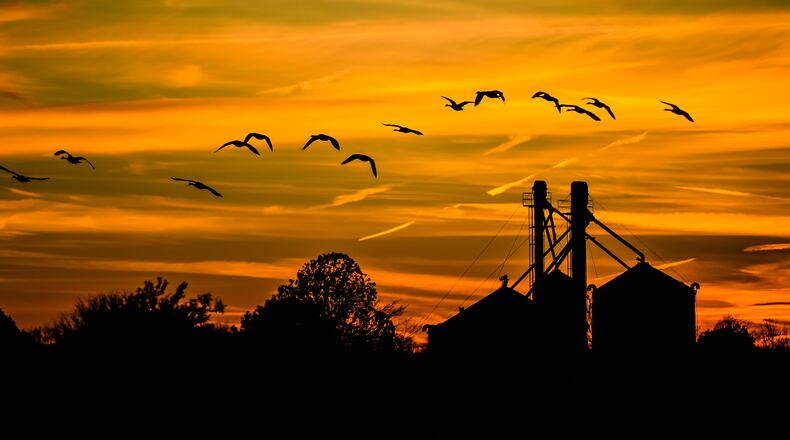MORE: Check out Skywitness7 for what’s going on in the night sky
First, to understand the color of a sunrise or sunset, one must understand the spectrum of light coming from the sun. Light from the sun is made up of the colors in the rainbow, which correspond to different wavelengths of radiation. The blues are made up of short wavelengths and the reds of longer wavelengths. The radiative properties of a dirty atmosphere differ from those of a clean atmosphere. That is because light from the sun is scattered differently by air molecules than by aerosols (which are relatively larger). Air molecules scatter the shorter wavelengths more efficiently, and that is why the sky is blue!
DOWNLOAD OUR FREE NEWS APPS FOR THE LATEST BREAKING NEWS
Dust or aerosols scatter the longer wavelengths (red light) more efficiently, and most of that light is scattered in the forward direction (the direction in which the light is moving). Also, at sunrise and sunset the sun’s rays travel through a long path of atmosphere, so these scattering processes are very efficient at those times. Therefore, sunlight traveling through a long path of dirty atmosphere at sunrise or sunset is made up of primarily the reddish wavelengths when it reaches the observer. A cleaner atmosphere at sunrise or sunset is colored by a mixture of all but the blue colors, giving it a yellowish appearance.
When high pressure is off to our west, we tend to get very colorful sunsets. High pressure usually contains a bit more dust and aerosols in the air because there is little or no precipitation associated with a high pressure system allowing the air to get dirtier. Basically, the dirtier the air, the more reddish the sunset. And since the weather moves from west to east here at our latitude, typically a red sky at night would tend to mean high pressure is moving our way - thus a “sailors delight”.
With sunrise occurring in the eastern sky, seeing a red sky in the morning would typically mean the high pressure system, thus “dirtier air” is moving away from you. This typically means more unsettled weather will be approaching from your west — thus “sailor take warning”.
Of course, it is important to note that it is more than just pressure systems moving by that can impact the color of a sunrise or sunset. Some of our most colorful sunsets in the Miami Valley come in late summer or early fall. This is usually due to wild fire season to our west and up in Canada. These massive fires can loft a lot of dust and ash high into the atmosphere and while these fires can be devastating, they also create some of the most spectacular sunrises and sunsets.
If you are also looking to capture some great pictures, there is a website that provides forecasts based off of several atmospheric conditions. Check out www.sunsetwx.com and there, you can find out with great accuracy when you can capture a spectacular sunrise or sunset! My only ask is that you share these shots with me on my Facebook or Twitter page.
MORE: Check out Skywitness7 for what’s going on in the night sky
DOWNLOAD OUR FREE NEWS APPS FOR THE LATEST BREAKING NEWS
Eric Elwell is WHIO StormCenter 7 Chief Meteorologist. Contact him at eric.elwell@coxinc.com or follow him on Facebook and Twitter
About the Author
